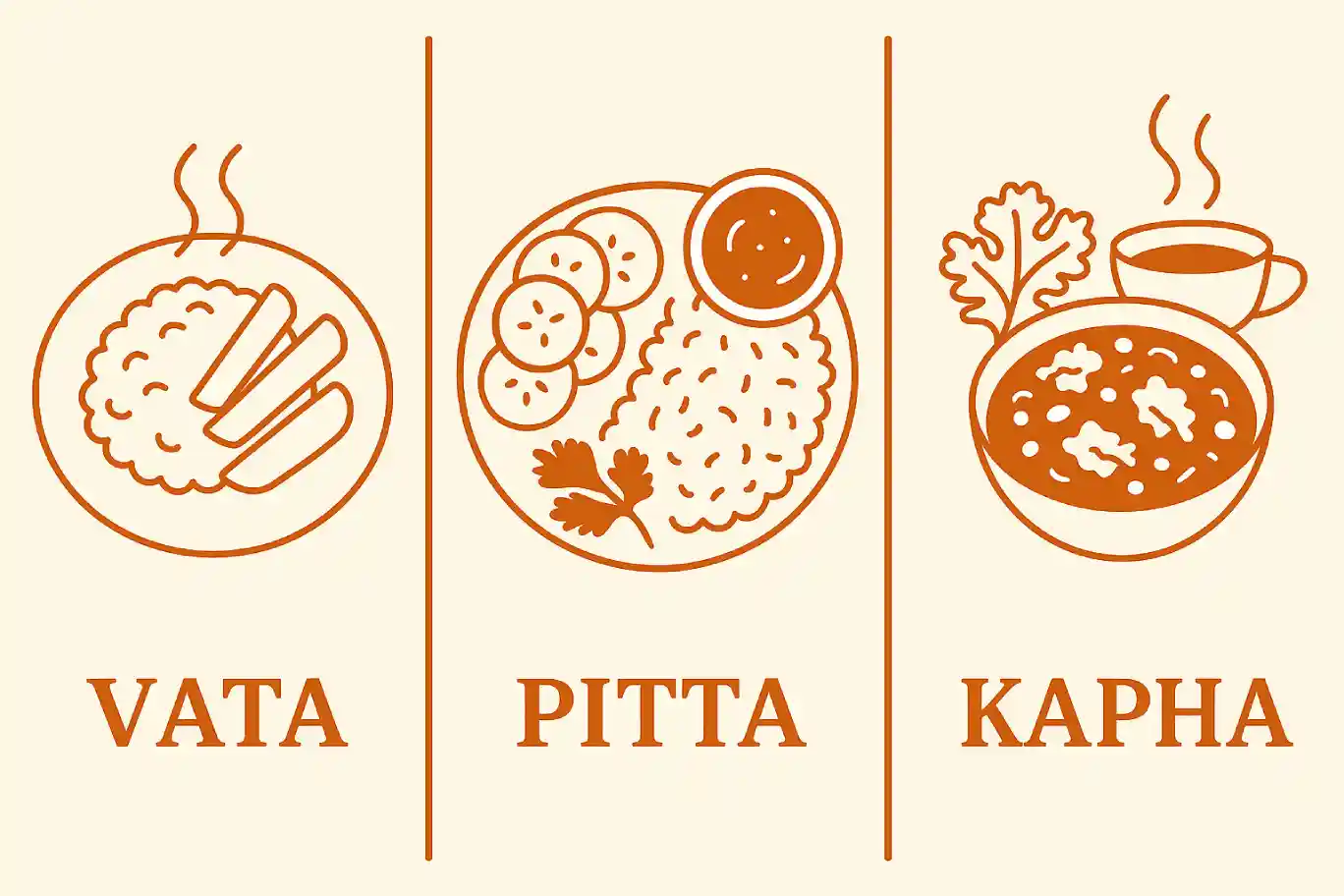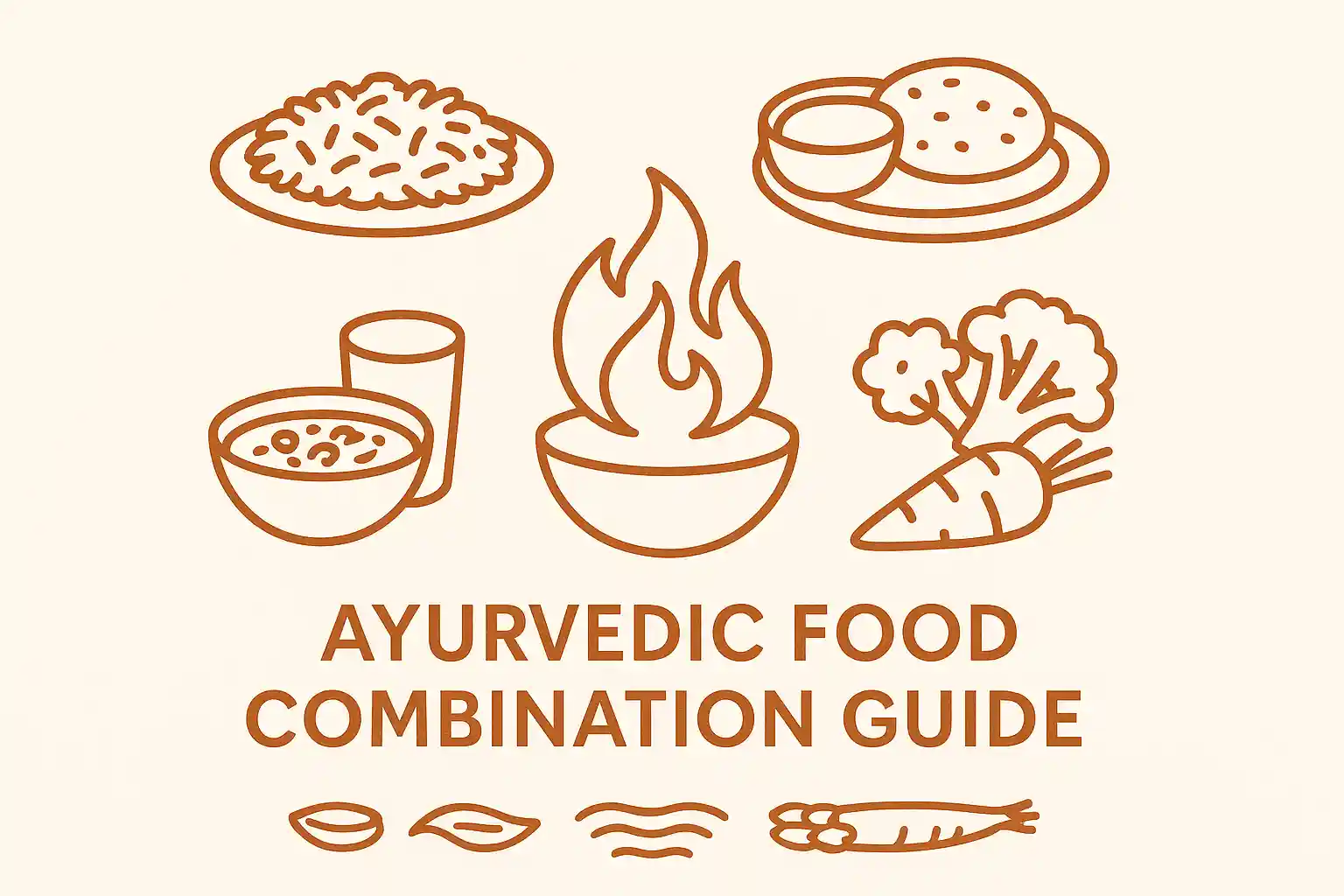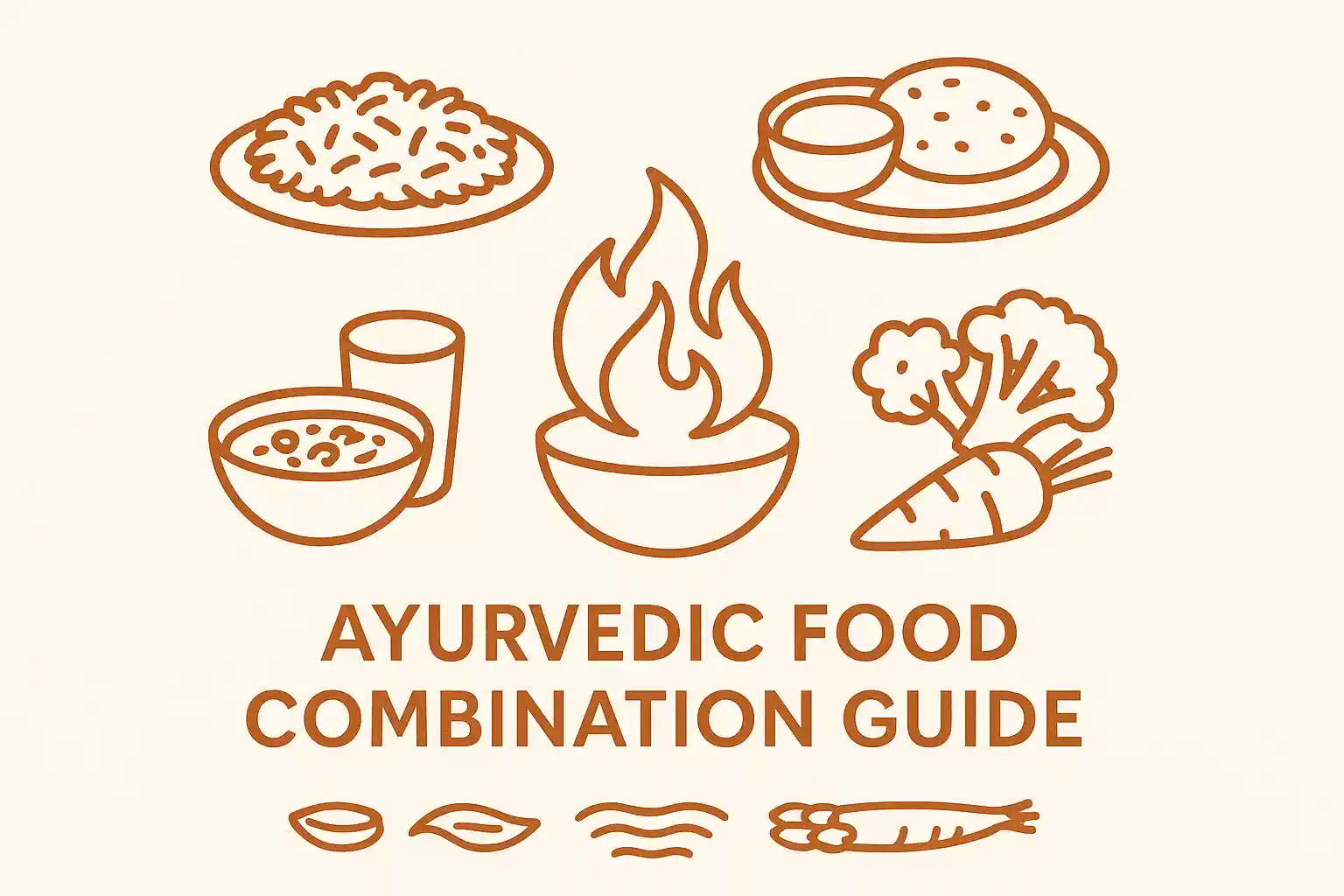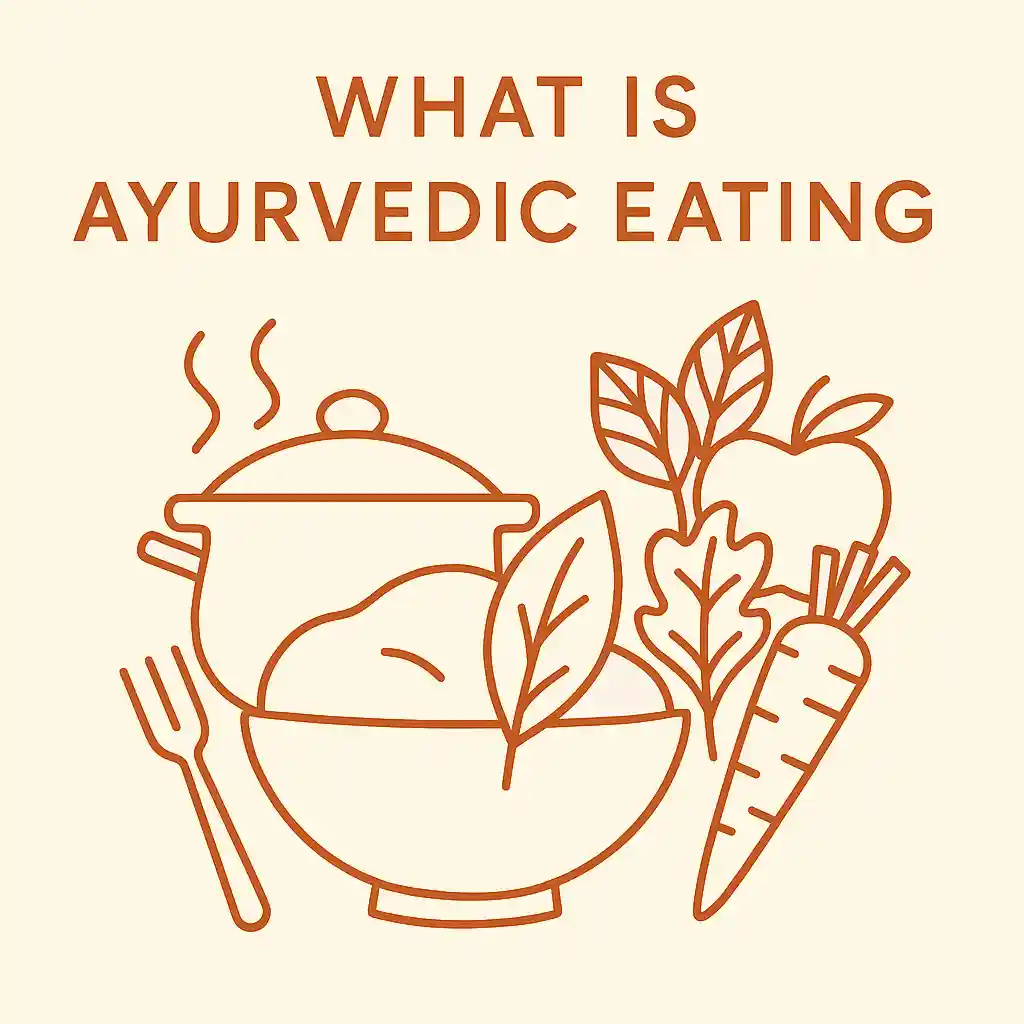Ayurvedic eating is more than a diet—it is a holistic, personalized approach to nourishment rooted in the ancient Indian science of life, Ayurveda. Far beyond counting calories or following rigid rules, Ayurvedic eating teaches us to choose, prepare, and enjoy food in ways that support our unique mind-body constitution (Prakriti), the changing seasons, and the state of our digestive fire (Agni).
This guide will introduce the key principles of Ayurvedic eating and show you how to apply them practically in modern life to promote well-being and resilience.
A Quick Introduction to Ayurveda
Ayurveda (आयुर्वेद) means "science of life" or "knowledge of life." Developed over 3,000 years ago and codified in classical texts such as the Charaka Samhita and Ashtanga Hridayam, Ayurveda views health as a state of dynamic balance between body, mind, and environment.
A central concept is that each person has a unique constitution composed of three fundamental energies, or Doshas:
- Vata (Air + Space)
- Pitta (Fire + Water)
- Kapha (Earth + Water)
Your dominant Dosha(s) influence your physical traits, mental tendencies, and how you digest and process food. Eating in harmony with your Dosha helps maintain or restore balance.
Core Principles of Ayurvedic Eating
1. Food as Medicine
In Ayurveda, food is considered a primary form of medicine—an everyday tool for preventing disease and fostering resilience. As the Charaka Samhita states: "When diet is wrong, medicine is of no use. When diet is correct, medicine is of no need."
Choosing the right foods for your constitution and state of health can strengthen Agni (digestive fire), nourish your tissues (Dhatus), and build Ojas (vital essence, supporting immunity and vitality).
2. The Central Role of Agni
Agni is the metabolic "fire" that governs digestion, absorption, and transformation of food into energy and tissue. According to the Ashtanga Hridayam, "Agni is the root of life. Its impairment causes disease; its balance promotes health."
Strong, balanced Agni leads to good digestion and vitality. Weak or imbalanced Agni results in incomplete digestion and the formation of Ama (toxins), a root cause of many diseases in Ayurveda.
Signs of healthy Agni include:
- Regular appetite
- Comfortable digestion without bloating or heaviness
- Clear mind and steady energy
Supporting Agni through appropriate food choices, eating habits, and lifestyle is a core goal of Ayurvedic eating.
3. The Qualities of Food: Rasa, Virya, Vipaka, Gunas
Food is evaluated not just by its macronutrients but by its inherent qualities:
- Rasa (Taste): Sweet, Sour, Salty, Bitter, Pungent, Astringent - learn more about the six tastes that form the foundation of Ayurvedic nutrition
- Virya (Potency): Heating or Cooling; influences the immediate effect on the body's energy and Agni.
- Vipaka (Post-digestive effect): How the food influences the body after digestion—sweet, sour, or pungent.
- Gunas (Qualities): Heavy/Light, Oily/Dry, Hot/Cold, Stable/Mobile, Subtle/Gross.
Selecting foods with qualities that balance your Dosha and current state is fundamental. For example:
- A Vata person may favor warm, oily, grounding foods.
- A Pitta person may need cooling, light, mildly spiced foods.
- A Kapha person benefits from light, dry, warming, stimulating foods.
4. Seasonal Eating (Ritucharya)
Ayurveda teaches that we should adjust our diet with the seasons to stay in harmony with nature. The Charaka Samhita outlines Ritucharya as an essential preventive healthcare practice:
- Spring: Favor light, bitter, astringent foods to reduce Kapha accumulation.
- Summer: Emphasize cooling, hydrating foods to balance Pitta.
- Autumn: Eat grounding, warm, moist foods to pacify Vata.
- Winter: Enjoy nourishing, warming, oily foods to support immunity and strength.
Learn more: Seasonal Ayurvedic Eating Guide

Ayurvedic seasonal eating: spring greens for detox, summer fruits for cooling, autumn squashes for grounding, winter roots for warmth
5. Mindful Eating Practices
How we eat is as important as what we eat:
- Eat in a calm, relaxed environment.
- Sit down without distractions.
- Chew food thoroughly.
- Eat only when hungry and stop when comfortably full.
Mindful eating enhances digestive capacity and fosters greater connection with your body's needs.
Modern research supports this: studies published in journals such as Mindfulness and Appetite show that mindful eating improves digestion, reduces overeating, and enhances well-being.
Ayurvedic Eating Guidelines You Can Apply Today
Favor Warm, Cooked Foods
Warm, freshly prepared meals are easier to digest and support healthy Agni. Limit cold, raw, or leftover foods which can dampen digestion and promote Ama formation.
Favor Fresh, Whole Foods
Choose seasonal, local, unprocessed ingredients. Classical Ayurveda warns against "old" or "stale" foods, which lack Prana (life force) and can burden digestion.
Practice Proper Food Combining
Certain combinations are traditionally avoided because they disturb Agni or promote Ama:
- Milk + sour fruits
- Yogurt + fruit
- Fish + dairy
- Bananas + milk
Learn more: Ayurvedic Food Combining Guide

Dosha-balancing meals: grounding foods for Vata, cooling foods for Pitta, light warming foods for Kapha
Eat at Optimal Times
- Main meal at midday, when digestive fire is strongest.
- Light dinner before sunset.
- Avoid late-night snacking, which can weaken Agni and disturb sleep.
Stay Hydrated Wisely
- Sip warm or room-temperature water throughout the day.
- Avoid iced drinks, which suppress Agni.
Eating for Your Dosha
Each Dosha has characteristic tendencies and imbalances. Eating to balance your Dosha can enhance digestion, energy, mood, and overall resilience.
Vata (Air + Space)
- Favor: Warm, moist, grounding foods; cooked grains, root vegetables, nourishing fats.
- Minimize: Cold, dry, raw, light foods.
Pitta (Fire + Water)
- Favor: Cooling, hydrating foods; sweet fruits, leafy greens, bitter vegetables.
- Minimize: Spicy, oily, sour, salty foods.
Kapha (Earth + Water)
- Favor: Light, dry, warming, stimulating foods; legumes, pungent spices, bitter greens.
- Minimize: Heavy, oily, sweet, cold foods.
Explore our Dosha-Specific Eating Guides for more personalized advice.
Modern Applications of Ayurvedic Eating
Ayurvedic eating is highly adaptable to modern life. You do not need to follow it perfectly to experience benefits. Start with small, sustainable shifts:
- Learn your Dosha and experiment with supportive foods.
- Observe how your body responds to different tastes and qualities.
- Use intuitive tools like our Ayurvedic Food Checker.
- Adjust your eating patterns seasonally.
Ayurvedic eating also complements deeper cleansing and rejuvenation practices, such as Panchakarma, by preparing the body and supporting post-cleanse vitality.
Final Thoughts
Ayurvedic eating is an invitation to cultivate a deeper relationship with food and your body's natural intelligence. As you learn to listen to your body's signals and align your choices with timeless principles of balance, you can experience greater vitality, clarity, and resilience.
Remember: this is a journey, not a prescription. Start with awareness, experiment with curiosity, and observe what supports your well-being.
Frequently Asked Questions
Common questions about starting your Ayurvedic eating journey
Continue Your Learning Journey
Master the foundations of Ayurvedic eating with our structured learning path
Next: Learn about Vata, Pitta, and Kapha constitutionsReady to take the next step?
Related Articles

Why Food Combining Matters in Ayurveda: A Guide to Better Digestion
Discover the ancient wisdom of food combining in Ayurveda. Learn which food pairings to avoid and how proper combining can strengthen your digestive fire (agni) for optimal health.
7 min read
Seasonal Ayurvedic Eating Guide
Learn how to eat with the seasons using Ayurvedic principles. Discover which foods support your body through spring, summer, fall, and winter for optimal balance and vitality.
8 min read
